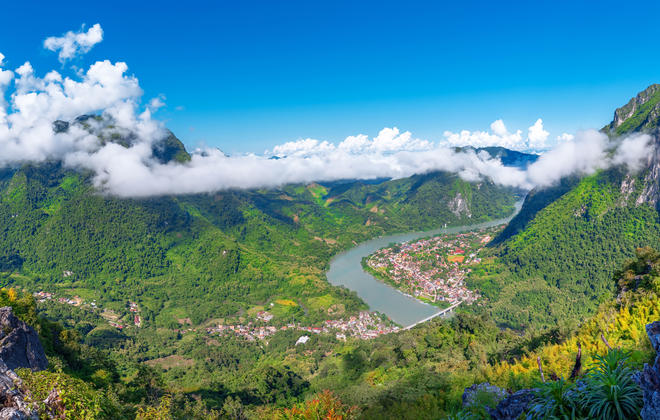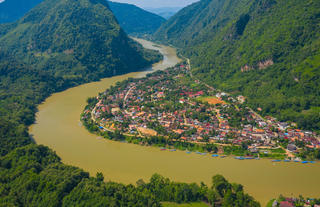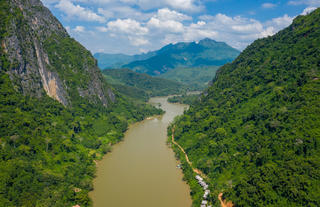Wedged between a number of larger neighbouring countries, Laos is often overlooked in favour of tourism giants such as Thailand and Vietnam. But these travellers are missing out on an extraordinarily scenic and culturally rich destination. Laos boasts a reputation as the least visited, least Westernised, and most untouched of all Indochinese nations. Only time will tell how long this will last, but while it does, visitors who choose to explore this nation’s remote areas will be richly rewarded. Laos’ primary drawcard is undoubtedly the mighty Mekong River which traverses the length of the country and is considered the second most biodiverse river in the world. In the north, the landscape is characterised by little-explored jungle-clad mountainous areas where visitors can witness the intriguing cultures of the various hill tribes that populate this region. Travellers on the hunt for cultural interest should head for the bustling capital of Vientiane, with its innumerable temples and Buddhist monuments. It is this variety of exotic wildlife, remote wilderness and remarkable cultural treasures that make Laos a truly unique and unforgettable holiday destination.
A charming town with elegant historical architecture and a distinctly French flavour, Luang Prabang in northern Laos is filled with interesting museums, bustling markets and traditional shops. 33 Buddhist temples dot the city.; the Haw Kham Royal Palace Museum and Wat Xieng Thong temple give travellers some background on and history of the Laotian people. Beyond the city, breathtaking nature and ancient sites await. Those who visit the Pak Ou Caves can see hundreds of Buddha statues accumulated there through the ages. The 180-foot Kuang Si Waterfalls, an hour’s drive out of the city, is one of the region’s natural highlights, with its layer upon cascading layer of turquoise pools and torrents.
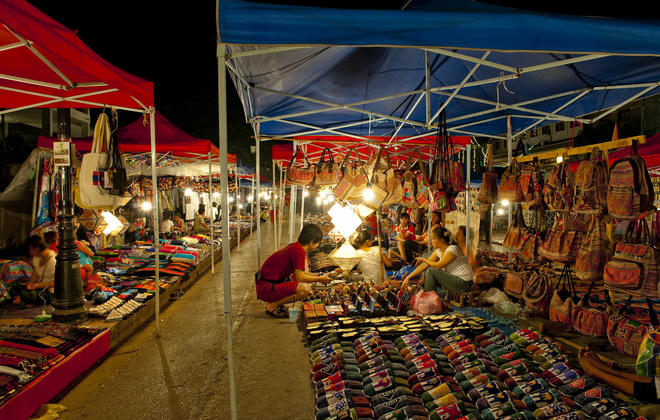




The small but charming village of Pakbeng sits at the midpoint between Huay Xai and Luang Prabang, where the Nam Beng River meets the Mekong, making it the quintessential stopover for travellers taking the scenic slow-boat journey through northern Laos. Quiet and unhurried, the village offers a handful of simple pleasures: a local market for basic supplies and a glimpse of daily life, a few modest temples, and a main street lined with thatch-roofed shops selling handmade trinkets and eateries serving traditional Lao dishes. Nearby, an elephant camp provides opportunities for respectful, close-up encounters with these gentle Asian giants. With its riverside setting and laid-back charm, Pakbeng offers a delightful pause between Mekong journeys.


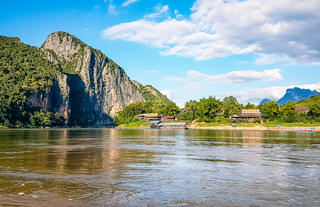
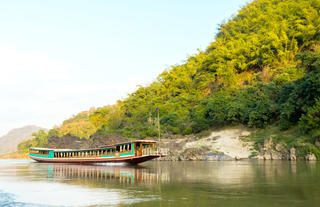
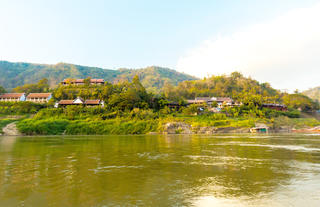
Resting along the serene Nam Pak River in the heart of northern Laos, the picturesque village of Muang La is enveloped by dramatic mountain peaks, lush forests, tranquil farmland and traditional rural communities. Its standout attraction is the soothing natural hot springs, where visitors can unwind in steaming, mineral-rich waters while taking in sweeping views of the river and surrounding hills. Adventure seekers will find a wealth of outdoor experiences nearby—trekking through jungle-clad slopes, cruising quiet rivers, mountain biking along village paths, and visiting Khmu, Akha, Ikhos and Hmong communities whose rich cultural traditions define the region. In town, a classically styled temple houses the revered Pra Singkham Buddha, one of northern Laos’s most treasured religious images. Peaceful, scenic and culturally immersive, Muang La offers a deeply restorative escape amid pristine mountain landscapes.





Phongsali, one of Laos’s most remote and pristine provinces, rewards intrepid travellers with extraordinary natural beauty and an evocative off-the-beaten-track charm. Set along the border with China’s Yunnan Province, the region is renowned for its sweeping vistas of rolling jungle, deep valleys and terraced rice fields, as well as some of the most dazzling star-filled night skies in the country. The provincial capital, also called Phongsali, sits high on a cool plateau beneath 1,625-metre Sky Mountain, offering crisp mountain air and breathtaking panoramas. Strong Chinese influence is woven into daily life here—seen in the town’s traditional timber-and-stone houses, the widely spoken local Chinese dialects, and the distinctive baggy trousers worn by the Chinese Ho community. The surrounding mountains are threaded with beautiful trekking routes that lead to remote hill-tribe villages where centuries-old customs endure and traditional dress remains part of everyday life. Atmospheric, authentic and wonderfully unhurried, Phongsali feels like a journey into a quieter, older Laos.





Set along the lush banks of the Ou River near the Vietnam border, Muang Khua is a quiet, scenic town ideal for slow travel and deep relaxation amid rainforest-clad mountains. Its small local market offers a window into daily life and some excellent Lao dishes—most notably Khao Soi, a fragrant, mildly spiced curry broth served with soft and crispy noodles, pickled cabbage and shallots. Beyond town, superb trekking trails wind through misty jungle valleys and over forested ridges to remote hill tribe villages, where rich cultural traditions endure.





Set amid dramatic limestone cliffs along the serene Ou River, Nong Khiaw is a picturesque riverside town that invites travellers to slow down and linger for days. Verdant jungle trails lead to remote hill-tribe villages where traditional dress and time-honoured customs remain part of daily life, while bamboo-raft trips down the river reveal sweeping views of lush mountains and quiet rural scenes. A short, scenic 2-kilometre walk takes visitors to the historic Pha Tok Caves, once a refuge for Pathet Lao soldiers during the Second Indochina War. After a day of exploring, the town’s simple spas offer soothing steam baths and traditional massages—an ideal way to unwind as sunset settles over the cliffs. Rugged, peaceful and visually spectacular, Nong Khiaw is one of northern Laos’s most captivating small-town escapes.
